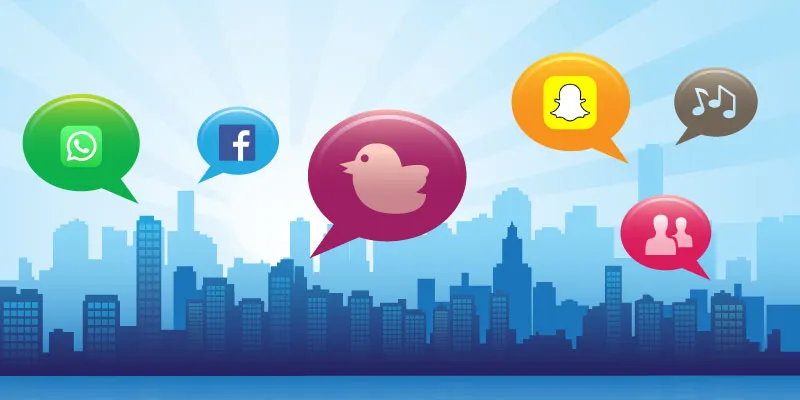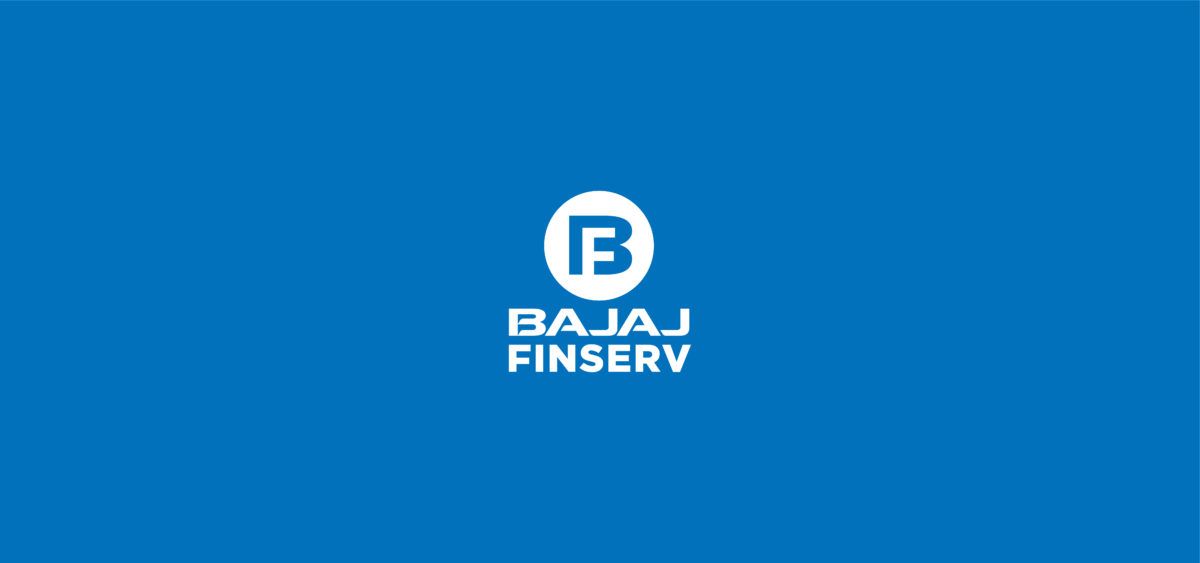Want to build a social network? Three things you should consider first
How can we build a new social networking platform? How can we replace Facebook?

Anand Mahindra, the chairman of Mahindra Group made a passionate tweet recently. He asked Indian startups to build India’s own social networking platform. A very noble thought.
If we need to stay relevant in the new digital age, we must have the building blocks of digital life, Search and Social. I have had some experience in building a social networking platform. With my last startup, Yappily, I was building a social network for shopping. Now that Mr Mahindra has also promised some seed fund to worthy startups, I am assuming there would be many young and energetic talents who would take up this opportunity. I believe, it is the right time to share what I learned in the process of building Yappily. Hoping that it might help in building India’s own social networking platform.
Building a social networking platform is tough. Replacing Facebook is even tougher. Most people think that we do not have to replace Facebook; we can co-exist. If you are thinking of anything smaller, it is not going to work.
Social networking is about having mind-share and time-share.
Today people are spending that time on Facebook, Instagram, WhatsApp, and Twitter. Making them give you some time apart from their usual routine means you are competing with them, whether you accept it or not. So from the beginning, the focus should be to replace Facebook. Period.
What do I mean when I say replace Facebook? It is not about taking over its position overnight. Let’s say you launch in a country, city or college. Replacing Facebook means your users should be giving as much time to your application, as they are giving to Facebook or Instagram. Your users should be hooked to your application, and keep coming back.
People who loved Twitter preferred it over Facebook. Twitter took away some of Facebook’s core users and their time. Similarly, people preferred using Instagram over Facebook to upload their photos. Snapchat, WhatsApp, Medium, Quora, etc all had users who preferred them over Facebook or others. Everyone was competing with Facebook. Everyone won by replacing Facebook as their preferred place for expressing themselves. Slowly, this number grew. Even more, joined their friends who were core users, and started dividing their time between Facebook and the other app.
So, now the vision is set and it is quite well-defined.
Vision: Build the next Facebook
Definition: People should be hooked to the app and keep coming back. They should prefer your app over the existing biggies. That is the meaning of building the next Facebook.
Here are three things, that I learned during my journey, that could help in achieving the vision.
Personalisation

India has a rich startup ecosystem. Successful entrepreneurs and founders are there to help young entrepreneurs grow and become successful. However, India’s startup success has been in ecommerce and SaaS play. Unfortunately, what worked for them will not work in building a social networking platform.
For example, most Indian startups get users by spending money on performance marketing. A social networking website cannot be built by getting customers through performance ads, but through organic viral growth. While the right metric for their businesses would be conversion, transactions and revenue, a social networking platform’s right metric are users, engagement and time spent.
After spending over six months in building my startup, I realised I was building the wrong thing. The first thing to build in a social networking platform is personalisation.
Users keep coming back to your platform for content and entertainment. The currency you are going for is their time. They use this currency to engage on your platform. What would keep bringing them back? Facebook’s algorithm keeps throwing content that will keep you hooked. Even newcomers like Medium and Quora keep bringing content, which would keep you entertained for a long time.
The other aspect is, no two users are same, or like the same stuff. What is interesting and engaging for me would be ‘meh’ for someone, and disgusting/uninteresting for someone else. The key to bringing your users back to your platform is to keep providing them with content that interests them.
I did this experiment with Quora. My friend and I started Quora with new accounts. We followed the same topics, people and interests to begin with. Then we spent a week browsing through the content. We refrained from commenting or up-voting any content. After seven days when we compared our feeds, it was very different. There were a few similarities, but most of the content and the sequences were very different.
The only way to crack this is to build personalisation. And this has to be built from the beginning. Every successful social network has focused on this. This is the holy grail of social networking. Most of the new social networking startups suck at this. In these cases, they build initial interest and hype, but slowly that fades away as users who keep coming back lose interest rapidly. (This is what happened with my startup.)
Twitter started its platform with a simple algorithm. It displayed the tweets made by your followers, in chronological order. While at first it was entertaining, even a company as big as Twitter started facing the issue of reduced user interest and repeat behaviour. After a lot of time, introduced a different personalised content, but it was too little and too late already.
The feed is the central aspect of any social network. Like the home page of a website, it is the feed which gets more than 90 percent of the traffic. Your first focus should be on this aspect. (And it has to be mobile, websites do not count anymore. Sorry)
The single biggest reason why Facebook beat Orkut was its feed. Orkut was at its top in India. Facebook’s feed design is what made it stand apart from others. Earlier we were fascinated with the number of scraps and messages. Facebook changed all that when they came with a timeline and displayed everything with a personalised feed.
Personalisation is most likely not going to work the first few times. While building this feature, it needs constant tweaking to perfect it. Sometimes, you might have to ditch the old algorithm for a new one.
Twitter is still trying to improve its personalisation. While it has not ditched their old algorithm completely, it is close to doing that. Quora keeps improving its algorithm and increasing relevance for users. Medium is also focused on doing this right.
Engagement

If the first point told about why your users would keep coming back, this second point is about what are they going to do when they come to your platform. Also what is going to be the most important metric to measure progress.
While in most public speeches and reports, the social network giants talk about their number of users, it is the engagement which is more important. They do briefly mention this point. However, for a young startup, engagement metrics is the most important metrics to measure.
Facebook in its last quarterly earnings report, Q4 2017, mentioned daily active users and monthly active users as one of the key metrics along with revenue and earnings per share. They do mention about average time spent by their users, as a sub-point though. This could be their most important metric, which they measure very closely. Everything else kind of depends on this core metrics.
Engagement can be measured in multiple ways. Number of views, number of likes/comments, number of shares, the frequency of visit, time spent on each visit, number of people interacted with, number of new follows or followers added, etc. Different platforms follow different engagement metrics.
Another way to look at the engagement is to look for 10th repeat or 20th repeat usage versus looking at number of active users/total users. It is this repeat usage which is tricky. If you are just measuring a repeat user (second or third repeat), they could give false positives leading to delay in identifying the problem. Why? Because, if the personalisation does not work, they could be leaving you in in the fourth or fifth visit.
The key is to identify the magic metrics or the “Aha” moment. The magic metrics is the tipping point beyond which the user is expected to stay engaged for a longer time frame and does not churn easily. This is usually on the higher side.
During its growth stage, Facebook’s magic metrics was “getting seven friends in first 10 days”. If a user added sever or more friends in their first 10 days, they were most likely to stay engaged.
Notification plays an important role in ensuring engagement. Without the ability to convey and deliver the notification, it is not possible to get repeat users. We are leaving in an era of abundance. People have too much on their plates, and they have limited free time. Until we get their mindshare, we cannot get their timeshare. To get a timeshare in the early days, notification is out best friend.
WhatsApp, the most engaging social application, sends you a notification as soon as you receive a message, either in the group, or in person. This notification is designed very well. At times you don’t have to open the app to see the message, as you see a preview of the limited content. If it’s important, you open and check the entire message, and comment on them.
WhatsApp values its notification very highly. Notifications can soon lead to fatigue also. In the era of constant attention or rather deficit of it, it is very important not to abuse this powerful tool. Users need to be nurtured, and slowly taken to a place where we have just enough attention from them to check the application, without feeling fatigued or be taken advantage of.
The other important aspect of engagement is variety. If you are given a similar type of content repeatedly, very soon you will develop content fatigue.
Facebook does this very well. If you notice, it has designed different type of content to be presented differently. A link only is different from a link with a quote, which is different from the text-only update, which is again different from the single image, which is again different from multiple images. Recently, it introduced small text status update different from longish text update.
Why have they gone to this extent to differentiate each content type? One of the primary reasons is content fatigue.
If you notice your feed closely, you will never find a continuous flow of similar content types. It is always a mixture of different content types. This variety keeps the user attention going without fatigue.
What about others? Do they present content differently? How do they counter content fatigue?
Unique differentiator

This leads to my third and last point. How do you become the next Facebook? This is probably the most important of all the three points. Not that the others are not important, but to win the battle, you have to solve all three aspects.
Every social network revolved around one key differentiator.
When Facebook was at its peak, Twitter was launched. Its unique differentiator was 140 characters. Everything revolved around that. People loved it for this simple thing. That found it its core users, and its ambassadors. If you remember during its early days, there were many who asked, why would anyone engage with only 140 characters, when you can type long forms on Facebook and express better.
This differentiator often divides people. Some people would love it, while others would hate it. As people who hate the feature, ridicule the startup in public, their fans become even more stronger and defend them even more strongly.
When Snap (then SnapChat) launched with the vanishing content idea, it was ridiculed by its detractors. Yet, it was the same feature that made Snap, what it is today. Teens loved this feature. More the news of ridicule, the usage and growth increased even further. Instagram, which had once made fun of that feature, introduced a similar feature “Stories” later.
At times this key differentiator could not a feature, but a restriction. People have been experiencing a problem with certain aspects of the existing product. At times, such restrictions on usage or feature could help them solve their problem in a hackish way.
Path introduced with a feature of having a maximum of 150 friends only. Especially in an era when people have more than 2,000 friends in their last. This was liked by people who were getting overwhelmed by their large list of friends. However, there were no real haters. At best people ignored them. Path also didn’t have any real fans. When people pointed out that they could do the same on Facebook also, just don’t add random friends. No one really came to defend.
This unique differentiator cannot be a side feature while the core offering is still the same. This side feature does not build fans. Neither does it build haters. It is a side feature that can be easily ignored. Most will probably try it out once or a few times, and then move on.
Hike messaging app is trying to compete with WhatsApp without any core differentiator. There are a few bells and whistles on top of the core chat experience. If Hike was to win this war, it needs to stand out with a core offering.
Not building a unique core offering is not only a losing proposition, but also an expensive one. If you want to build a product similar to Facebook, or WhatsApp, you cannot launch with a small offering. WhatsApp and Facebook have more features, which the users already use. They will not move away from their current social network to use a smaller feature set. And to build more features or think that users will come if I have a plethora of features is foolish. Social networks do not win due to a bouquet of features. They win because of their unique differentiator. The bouquet of features comes later to keep the competition away. It helps in arresting small leaks in the bucket only, they can not build the bucket themselves, figuratively speaking.
Google has tried this multiple times and failed. It already has a very popular social platform, YouTube. It does not have any dearth of investment. Yet it has failed to compete with Facebook. What was the unique differentiator of its offerings?
As a startup, you need to lead with this core offering. Nothing less is going to work.
Conclusion
These are by no means a comprehensive list of things to do. In my opinion, these are the top three things to do.
It is not going to be an easy journey. In fact, it is going to be a very very tough journey. You would need an undying passion, unwavering determination and a thick skin to even start this fight.
There will be a lot of detractors. They will keep suggesting to not go on this lonely path. They are the people who will also say, “I told you so,” when you fail. This is why you need all the above.
More than others, it needs your unwavering determination and passion to make it work. You would come across many more opportunities, which would seem simpler. You will have many other people who will go past you and will be celebrated. Your determination will be tested.
And it is not going to be quick. If your goal is to make quick money, then this is not going to be the one. It could take years to even come up with that one feature that would work. And you would need believers, who would back you through this process.
Most likely you are going to fail. It is better to fail, than not having tried. If you fail, you will join the likes of Google and Microsoft who have tried and failed too. You will come out of it with loads of learnings. If you succeed, history books will be written about you and your journey.
It is not all gloomy though. Sharechat an Indian startup is doing great. They focused on the local language users. Now they have build millions of users who are highly engaged in their platform. It is still early days. They seem to be going in the right direction.
(Disclaimer: The views and opinions expressed in this article are those of the author and do not necessarily reflect the views of YourStory.)











